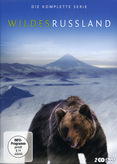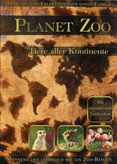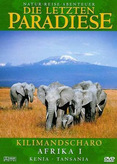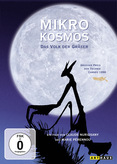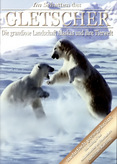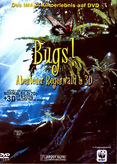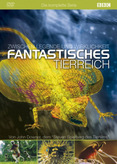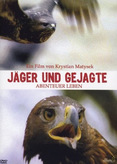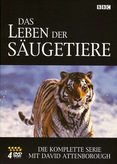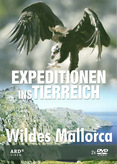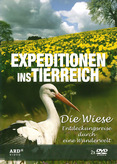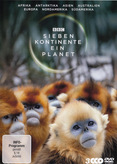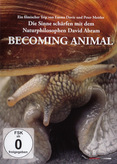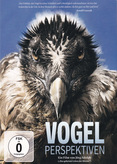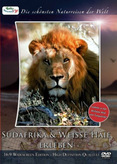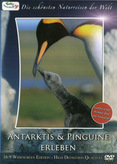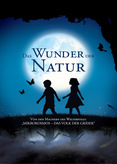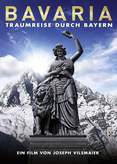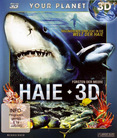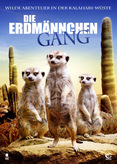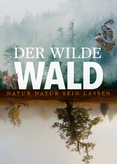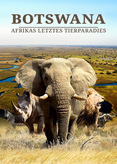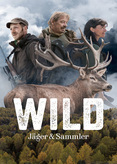Diese Serie ist weltweit die erste umfassende Darstellung der russischen Natur. Elchkämpfe im inneren Ural, tauchende Robben im Baikalsee, streunende Amur-Tiger am Pazifikstrand - das ist das 'Wilde Russland'. Die gleichnamige sechsteilige Reihe bietet Einblicke in eine neue, unbekannte Welt. Wir zeigen Tiere, die noch niemand zuvor gedreht hat, in Regionen, die selbst viele Russen bisher kaum zu Gesicht bekommen haben. Denn viele Landstriche dort waren bis vor kurzem noch Sperrgebiet und damit tabu für Filmteams. Hinzu kommt, dass das Riesenreich nur schwer zugänglich ist. An viele Drehorte gelangte das Team von Wildes Russland nur aus der Luft und erst nach Zustimmung des Geheimdienstes. Mit 1200 Drehtagen ist 'Wildes Russland' das mit Abstand aufwendigste Tierfilmprojekt im deutschen Fernsehen, hergestellt vom NDR in Koproduktion mit dem WDR. Es ist ein Projekt, das schon während der Dreharbeiten weltweit Aufsehen erregte. 2,5 Jahre Drehzeit, 3,5 Jahre Produktionszeit, 5 Koproduktionspartner: NDR, WDR, S4C, National Geographic, Animal Planet. 6 Folgen im hochauflösenden HD-Format gedreht, 10 Kamerateams (Deutschlands renommierteste Tierfilmer und zwei russische Kameraleute), 50 Stunden Flugaufnahmen, 600 Stunden Rohmaterial, 1.200 Drehtage, 100.000 Reisekilometer. Die Koproduktion mit dem WDR entstand unter Federführung des NDR und wurde vom NDR Naturfilm / Studio Hamburg Produktion hergestellt. Weitere internationale Partner sind National Geografic, Animal Planet und S4C. Den Kamerateams, die in allen großen Naturlandschaften Russlands gedreht haben, gelangen einzigartige Aufnahmen, darunter seltene Aufnahmen von Amur-Tigern in der Wildnis. Von diesen größten Raubkatzen der Erde leben nur noch wenige Dutzend in Freiheit. Der Schneekranich in seinem Brutgebiet im arktischen Nordosten Russlands und das Kaukasische Hochlandwisent wurden erstmals gefilmt. Zudem glückten weitere sensationelle Aufnahmen, etwa von der Geburt Europäischer Nerze. Diese Marderart ist extrem selten und gehören zu den gefährdeten Arten, genau wie der Russische Desman, ein merkwürdiger Unterwassermaulwurf. Weitere Raritäten sind der Kaukasische Steinbock und der extrem scheue Vielfraß.Wer Russland wirklich verstehen will, die Weiten, Wälder, Sümpfe und gewaltigen Ströme wie Lena und Wolga, muss in die Luft gehen. Da in Russland geeignete Fluggeräte Mangelware sind, wurde kurzerhand ein transportfähiger Kamerastabilisator an alles Verfügbare geschraubt - vom alten Militärhubschrauber bis zum 40 Jahre alten Doppeldecker. Der russische Innlandsgeheimdienst FSB interessierte sich für die Aktivitäten der ausländischen Kameraleute und nahm etliche Kassetten kritisch unter die Lupe.HD-Kameras, aufwendige Zeitlupen und Unterwasserkameras liefern Bilder höchster Qualität.
Die sechs Folgen im Einzelnen:
- Der Kaukasus
- Der Ural
- Sibirien
- Die Arktis
- Der Ferne Osten
- Kamtschatka
Weiterlesen »
This series is the world's first comprehensive account of Russian nature. Moose fights in the inner Urals, diving seals in Lake Baikal, stray Amur tigers on the Pacific beach - this is the 'Wild Russia'. The six-part series of the same name offers insights into a new, unknown world. We show animals that no one has filmed before, in regions that even many Russians have hardly seen before. Until recently, many areas there were still restricted areas and therefore taboo for film crews. In addition, the giant empire is difficult to access. The Wildes Russland team only reached many locations from the air and only after the approval of the secret service. With 1200 days of shooting, 'Wild Russia' is by far the most elaborate animal film project on German television, produced by NDR in co-production with WDR. It is a project that already caused a stir worldwide during filming. 2.5 years of shooting, 3.5 years of production, 5 co-production partners: NDR, WDR, S4C, National Geographic, Animal Planet. 6 episodes shot in high-resolution HD format, 10 camera teams (Germany's most renowned wildlife filmmakers and two Russian cameramen), 50 hours of aerial footage, 600 hours of raw material, 1,200 days of shooting, 100,000 travel kilometers. The co-production with WDR was created under the auspices of NDR and was produced by NDR Naturfilm / Studio Hamburg Produktion. Other international partners are National Geographic, Animal Planet and S4C. The camera crews, who have filmed in all of Russia's major natural landscapes, have captured unique shots, including rare footage of Amur tigers in the wild. Of these largest big cats on earth, only a few dozen still live in the wild. The snow crane in its breeding area in the Arctic northeast of Russia and the Caucasian highland bison were filmed for the first time. In addition, other sensational shots were taken, for example of the birth of the European mink. This species of marten is extremely rare and belongs to the endangered species, just like the Russian Desman, a strange underwater mole. Other rarities are the Caucasian ibex and the extremely shy wolverine.If you really want to understand Russia, the expanses, forests, swamps and mighty rivers like the Lena and Volga, you have to take to the air. Since suitable aircraft are in short supply in Russia, a transportable camera stabilizer was quickly screwed to everything available - from old military helicopters to 40-year-old biplanes. The Russian domestic intelligence service FSB was interested in the activities of the foreign cameramen and took a critical look at a number of cassettes.HD cameras, elaborate slow motion and underwater cameras deliver images of the highest quality.
The six episodes in detail:
- The Caucasus
- The Urals
-Siberia
- The Arctic
- The Far East
-Kamchatka
More »
